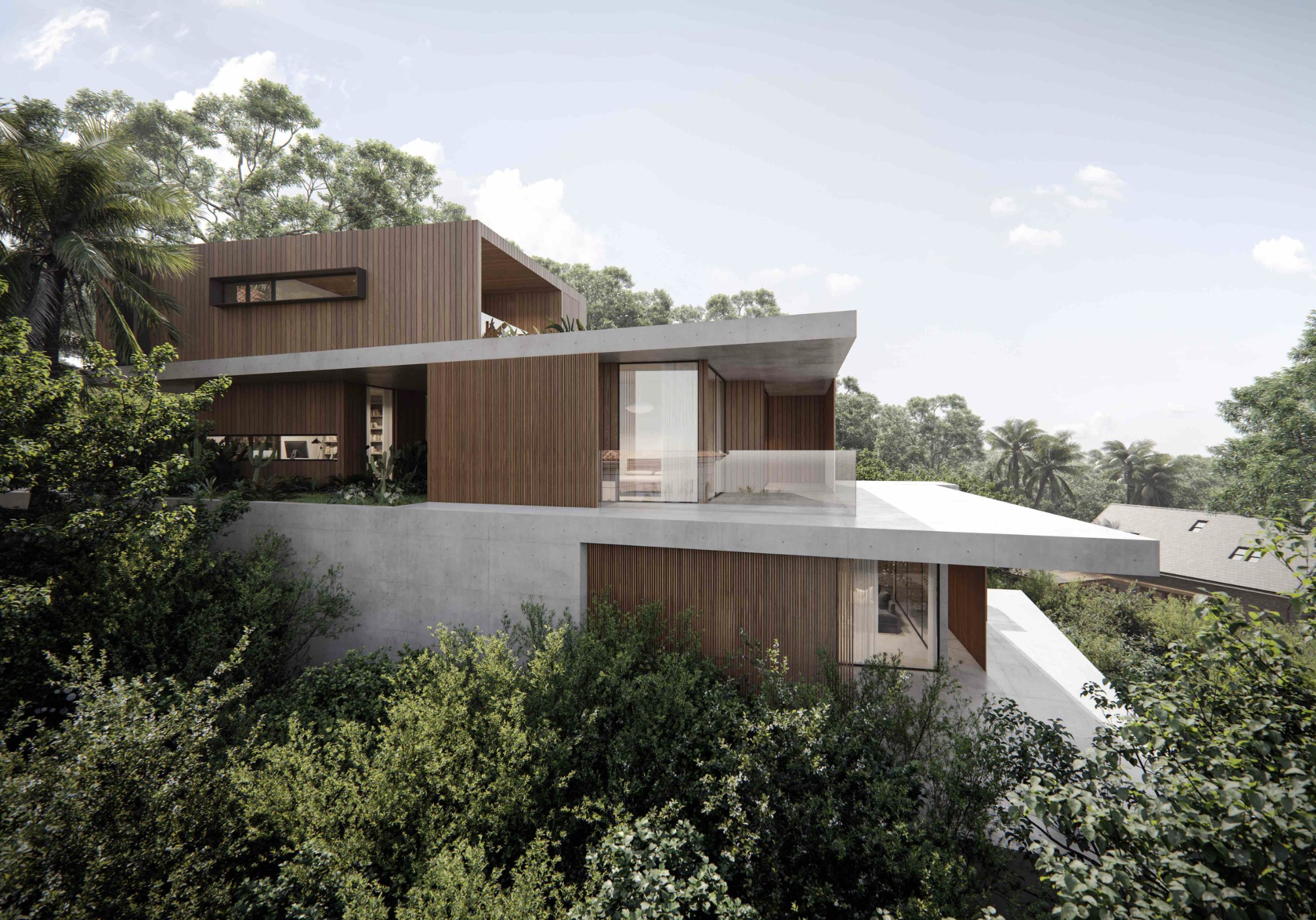
What is the difference between Secondary Dwellings and Dual Occupancies?
When it comes to expanding residential properties in New South Wales (NSW), two popular options are secondary dwellings (often referred to as granny flats) and
Home / Residential Development: Home Extensions and Renovations
Our firm solely serves clients across New South Wales. With a strong history and over 3000 successful projects completed, our team have worked extensively with local council, enhancing project success rates.

When applying for a Development Application (DA) for home extensions and renovations, councils require specific documentation to assess the impact of the proposed alterations on the surrounding environment, property aesthetics and structural integrity. Extensions and renovations vary widely in scale, so the required documents are tailored to ensure that the development respects the existing structure, maintains neighbourhood character and adheres to relevant building codes. Below is an outline of essential documents typically required for this type of residential development, with a focus on the unique considerations associated with extending or altering an existing home.
The Statement of Environmental Effects (SEE) is a key document that details how the proposed home extension or renovation will impact the local environment, neighbouring properties and streetscape. The SEE should address the size and scale of the extension, its compatibility with the existing structure and any potential effects on sunlight, privacy, or views. It should also outline any specific mitigation measures, such as landscaping or screening, to reduce potential impacts on neighbours and to demonstrate compliance with local planning policies.
A Site Plan and Design Proposal provides a detailed overview of the property’s existing layout and the proposed changes. This plan should indicate the precise location of the extension or renovation in relation to the primary structure, property boundaries, and any surrounding features, such as trees or driveways. The design proposal should also detail how the new addition will integrate with the existing architecture, respecting the home’s original style and maintaining consistency with neighbouring properties. Councils rely on this plan to confirm that the extension’s design and placement meet setback, height, and site coverage requirements.
The Architectural Plans are essential documents that include floor plans, elevations and sections, showing how the extension or renovation will look and function. These drawings should depict the internal layout, external appearance and materials to be used, with particular attention to how the addition complements the original structure. The council will assess these plans to verify that the project meets building codes and design standards, ensuring the alterations are structurally sound and visually cohesive.
A Survey Plan establishes the legal boundaries of the property and provides a precise reference for the proposed extensions. This document is crucial for verifying that the renovations comply with required setbacks and do not encroach on neighbouring properties or restricted areas. The Survey Plan also ensures that any additions are situated within the allowable building envelope, protecting the rights of neighbours and maintaining clear property lines.
The Heritage Impact Statement may be required if the home is located in a heritage precinct or is heritage-listed. This report evaluates how the extension or renovation will affect the architectural or cultural significance of the original building and its surroundings. The Heritage Impact Statement will include recommendations to preserve historical features or suggest sympathetic design choices, such as using traditional materials or maintaining the facade’s original style. This document ensures that any alterations align with heritage conservation principles.
An Erosion and Sediment Control Plan may be necessary, especially if the project involves significant ground disturbance. This plan outlines measures to prevent soil erosion and manage sediment runoff during construction. Techniques might include temporary ground covers, silt fences or sediment barriers to stabilise the area and protect surrounding properties from erosion impacts. Councils require this plan to minimise environmental impacts, particularly if the site has a natural slope or is near sensitive areas.
A Stormwater and Drainage Management Plan ensures that the extension or renovation does not negatively impact on-site water management. This plan should demonstrate how stormwater will be collected, directed and managed on-site, including any adjustments required for additional roof area or impervious surfaces. Solutions might include adding rainwater tanks, drainage channels or retention basins, depending on the site’s specific needs. The council assesses this plan to confirm that the alterations will not contribute to flooding or drainage issues for neighbouring properties.
A Construction Management Plan is recommended for larger home extensions and significant renovations. This plan provides details on how construction activities will be managed, including site access, material storage, waste disposal and measures to control noise, dust and other disturbances. The Construction Management Plan should also include working hours, traffic management and safety protocols to minimise disruptions for neighbours and maintain a safe construction site. Councils use this plan to ensure that the construction process will be conducted responsibly and with minimal impact on the surrounding community.
For certain home extension and renovation projects, councils may request additional reports depending on the nature of the site, its environmental characteristics, or specific planning concerns.
Privacy Impact Assessment
If the extension includes large windows, balconies, or elevated areas that could overlook neighbouring properties, a Privacy Impact Assessment may be required. This report evaluates how the design could impact the privacy of nearby homes and suggests solutions, such as frosted glass, screening plants, or adjusting the positioning of windows to limit sightlines.
Bushfire Risk Assessment
If the property is situated in a bushfire-prone area, a Bushfire Risk Assessment will be necessary to assess the potential risks and propose safety measures. This report may recommend using fire-resistant materials, creating defensible zones around the extension, and ensuring adequate access for emergency vehicles, particularly for upper-level additions.
Geotechnical Report
If the property has challenging soil conditions or a significant slope, a Geotechnical Report may be needed. This report assesses soil stability and provides recommendations for foundation support, retaining walls, or erosion control measures to ensure the structural stability of the extension and minimise potential impacts on neighbouring properties.
Arborist Report
If mature trees or significant vegetation could be affected by the extension, an Arborist Report may be required. This report evaluates the health and structural stability of any trees that may need to be removed or preserved, recommending strategies to protect tree roots or implement tree-friendly construction methods to preserve greenery on the property.
Acoustic Report
For renovations that may generate noise, such as adding a home theatre, music room, or an outdoor entertainment area, an Acoustic Report may be necessary. This report evaluates potential noise impacts and suggests soundproofing measures to reduce disruption for neighbouring properties.
Energy Efficiency Report
In some cases, councils may request an Energy Efficiency Report that outlines eco-friendly features integrated into the extension or renovation. This report might include energy-saving measures like high-performance insulation, double-glazed windows, energy-efficient lighting, or solar panels. Energy-efficient designs help reduce the home’s carbon footprint and align with sustainable building practices.
Flood Risk Management Report
If the property is located in a flood-prone area, a Flood Risk Management Report may be required. This report assesses the flood risks to the site and recommends measures such as elevating the extension, installing flood barriers, or improving drainage systems to protect the property and maintain water flow during heavy rain.

When it comes to expanding residential properties in New South Wales (NSW), two popular options are secondary dwellings (often referred to as granny flats) and

In New South Wales (NSW), the approval requirements for tiny homes, moveable dwellings, cabins and affordable housing vary based on factors such as the type

Renovating a property in New South Wales (NSW) that is heritage-listed or located within a heritage conservation area requires careful planning to preserve its historical

Undertaking demolition work on your property in New South Wales (NSW) requires careful planning and adherence to regulatory requirements to ensure safety and compliance. Here’s

When planning to change the use of a commercial property in New South Wales (NSW), understanding the parking requirements is vital for compliance with local

When embarking on a development project, you may wonder whether you need an architect, a town planner, or both. Each professional brings unique expertise to




Guaranteed Approval. Free 30-minute Expert Consult
Our head office is based at Level 1, 1-5 Link Road, Zetland NSW